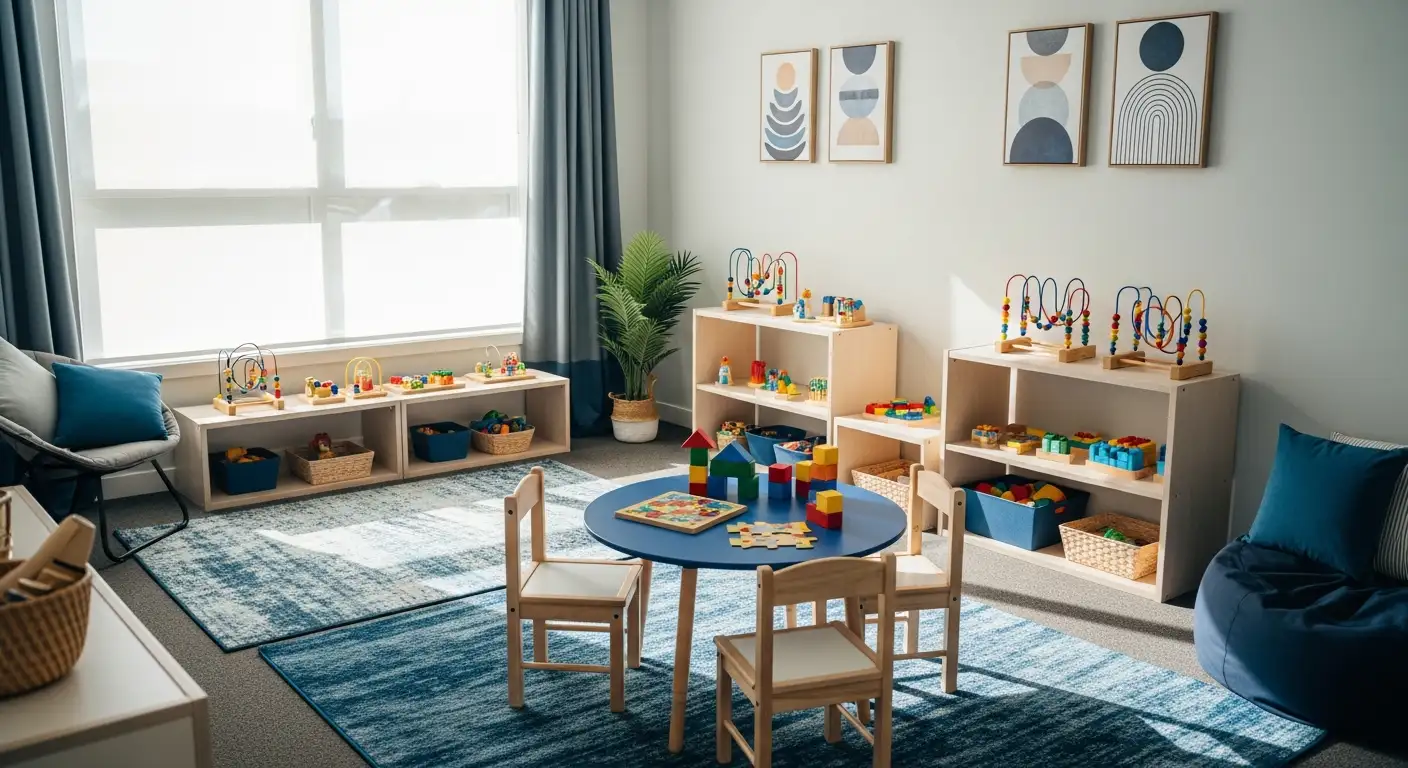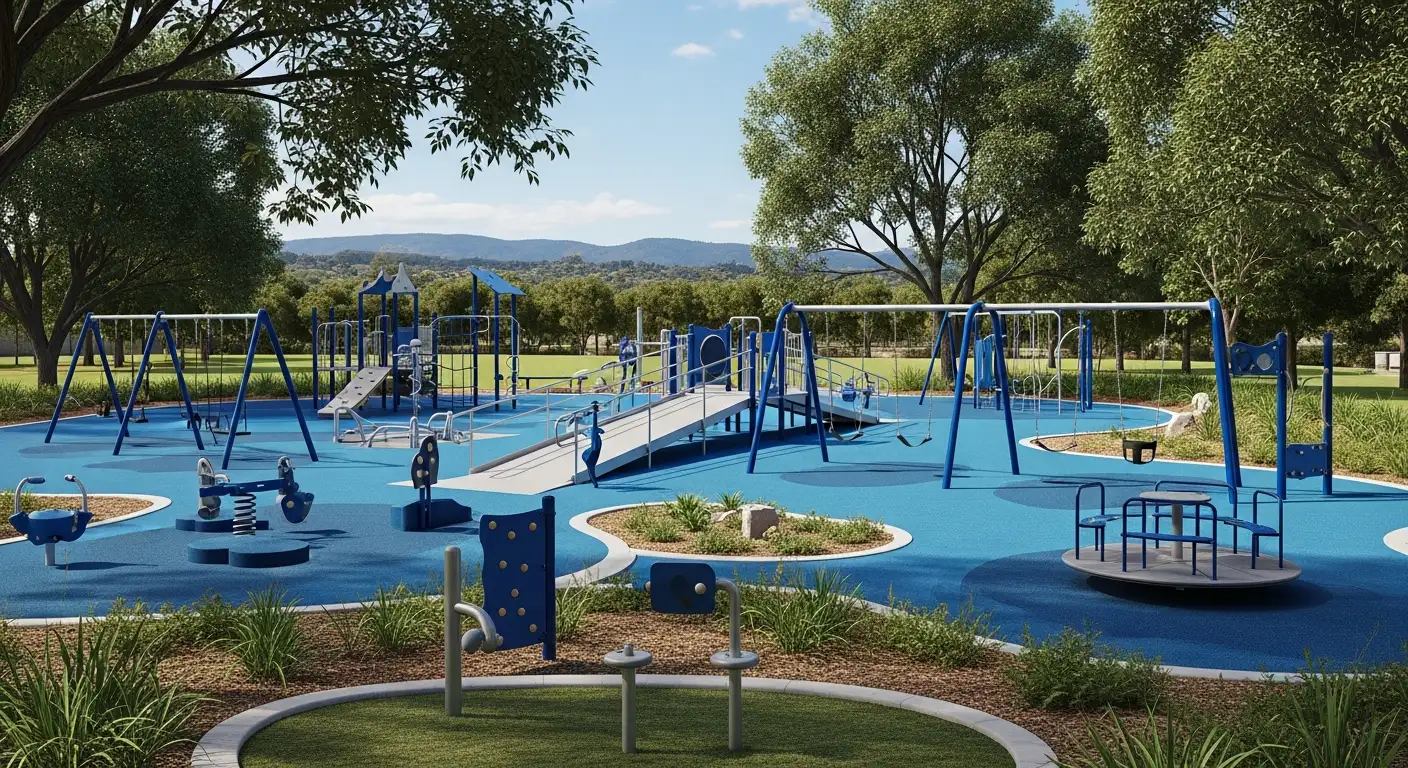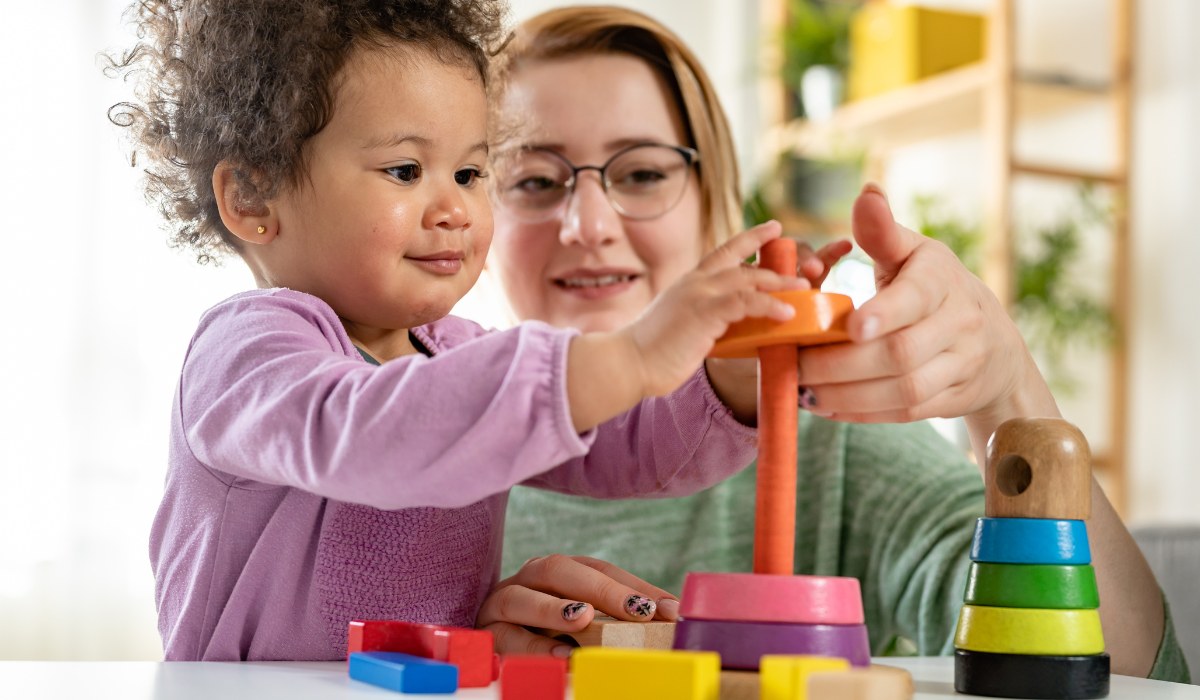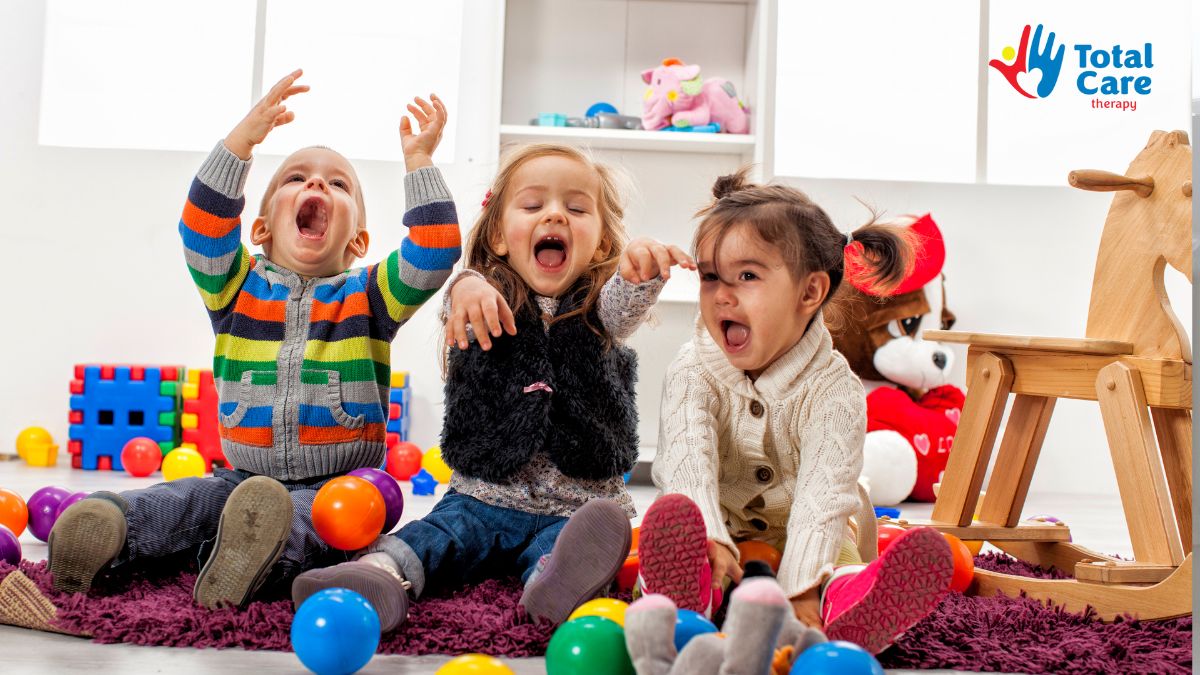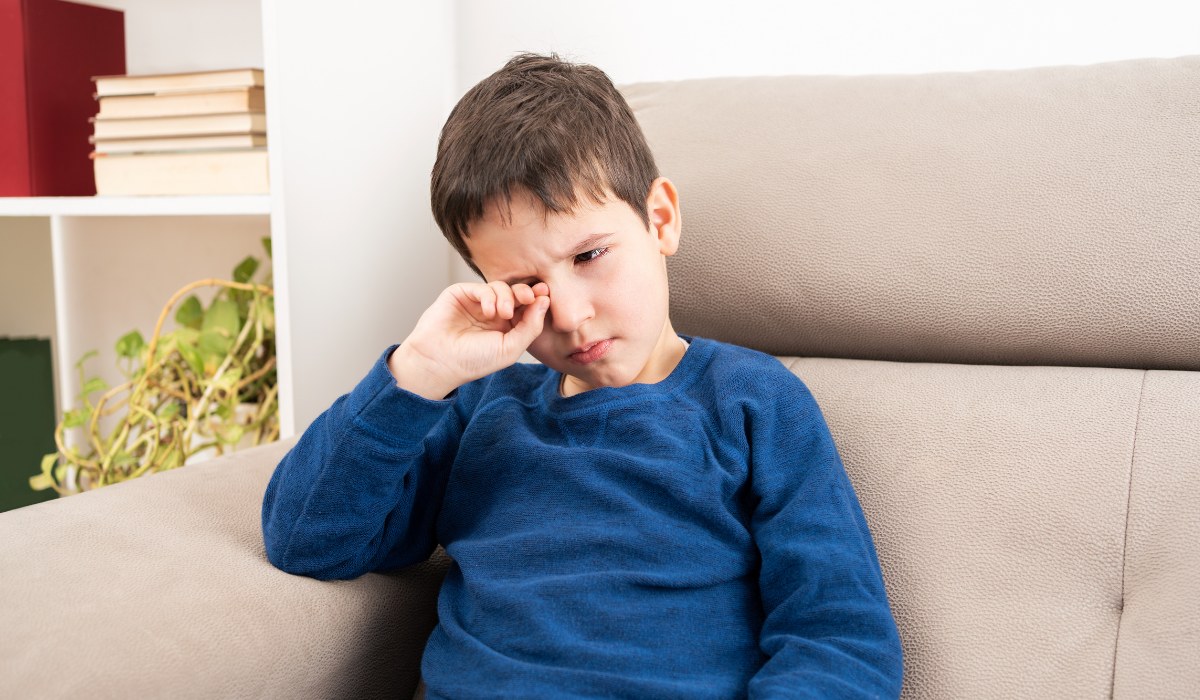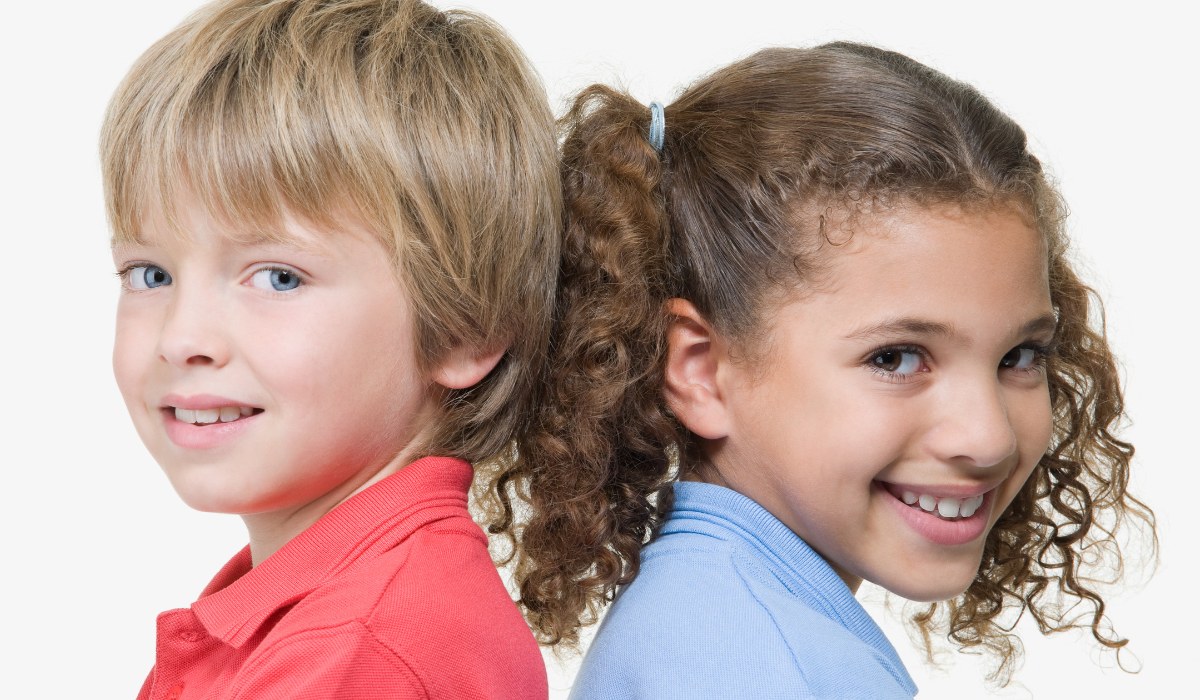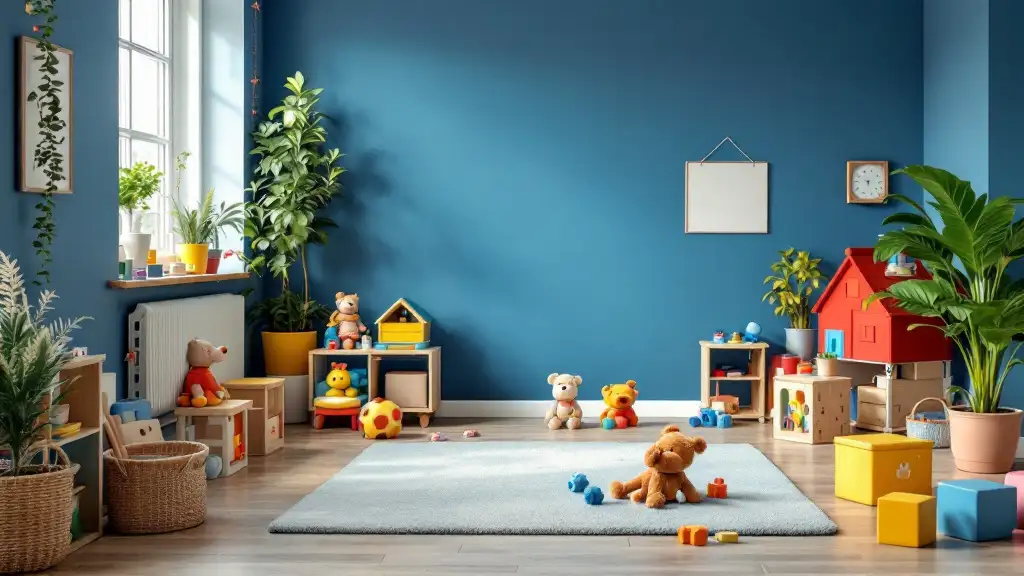How to Help Autistic Children Develop Friendships
Building Bridges: Strategies for Supporting Friendships in Autistic Children

Understanding the Foundations of Friendship for Autistic Children
Developing friendships is vital for children’s social well-being, emotional health, and overall development. For autistic children, building and maintaining meaningful connections with peers can present unique challenges, but with targeted strategies and supportive environments, these children can thrive socially. This article explores practical, evidence-based approaches to help autistic children develop strong, lasting friendships, emphasizing collaborative efforts from parents, caregivers, teachers, and the community.
Creating Supportive and Inclusive Environments
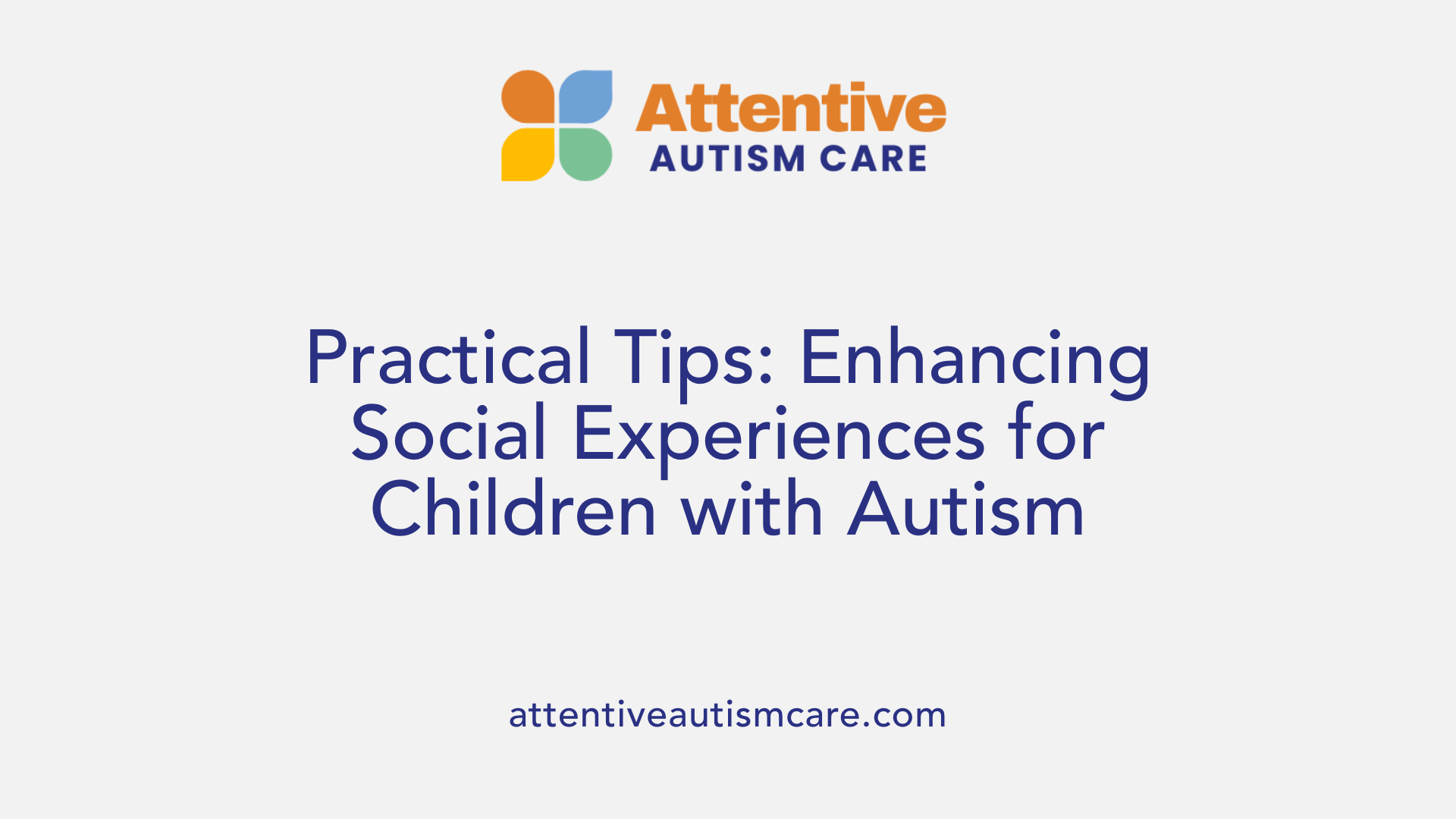
How does inclusion in classroom settings support friendship development?
Integrating children with autism into typical classroom environments encourages interaction with their peers, helping them become familiar with social cues and norms. Such inclusion allows children with autism to observe and practice social skills in a natural setting, which can lead to the development of meaningful friendships. Structured activities within these settings promote shared experiences, which are the foundation of friendships.
Why is educating peers and parents about autism important?
Disseminating information about autism helps dispel misconceptions, fostering understanding and patience. When peers understand why autistic children may behave differently—such as seeming withdrawn or avoiding eye contact—they are more likely to approach and include them kindly. Educated parents and teachers can support their children better by encouraging inclusive behaviors and guiding social interactions.
How do supportive teachers and willing peers create opportunities for social interaction?
Supportive teachers implement structured social skills programs, such as buddy systems, where typically developing peers are paired with children with autism. These programs facilitate guided interactions in safe environments. Teachers and peers who are willing to engage and include children with autism in activities like recess or group projects help them practice social skills, build confidence, and form friendships.
Practical tips to facilitate positive social experiences for autistic children
Creating consistent routines and using visual supports, like cue cards or social stories, clarify what's expected during social interactions. Modeling friendly behaviors, such as asking questions or sharing, provides children with concrete examples. Recognizing and praising social attempts encourages children to continue engaging. Incorporating the child's interests, like hobbies or preferred topics, motivates participation. Structured opportunities for guided social practice, supported by professionals and peers, further enhance social confidence.
This inclusive approach, supported by educational efforts, structured activities, and understanding from all involved, greatly enhances the chances for children with autism to develop lasting friendships.
Fostering Peer Awareness and Education
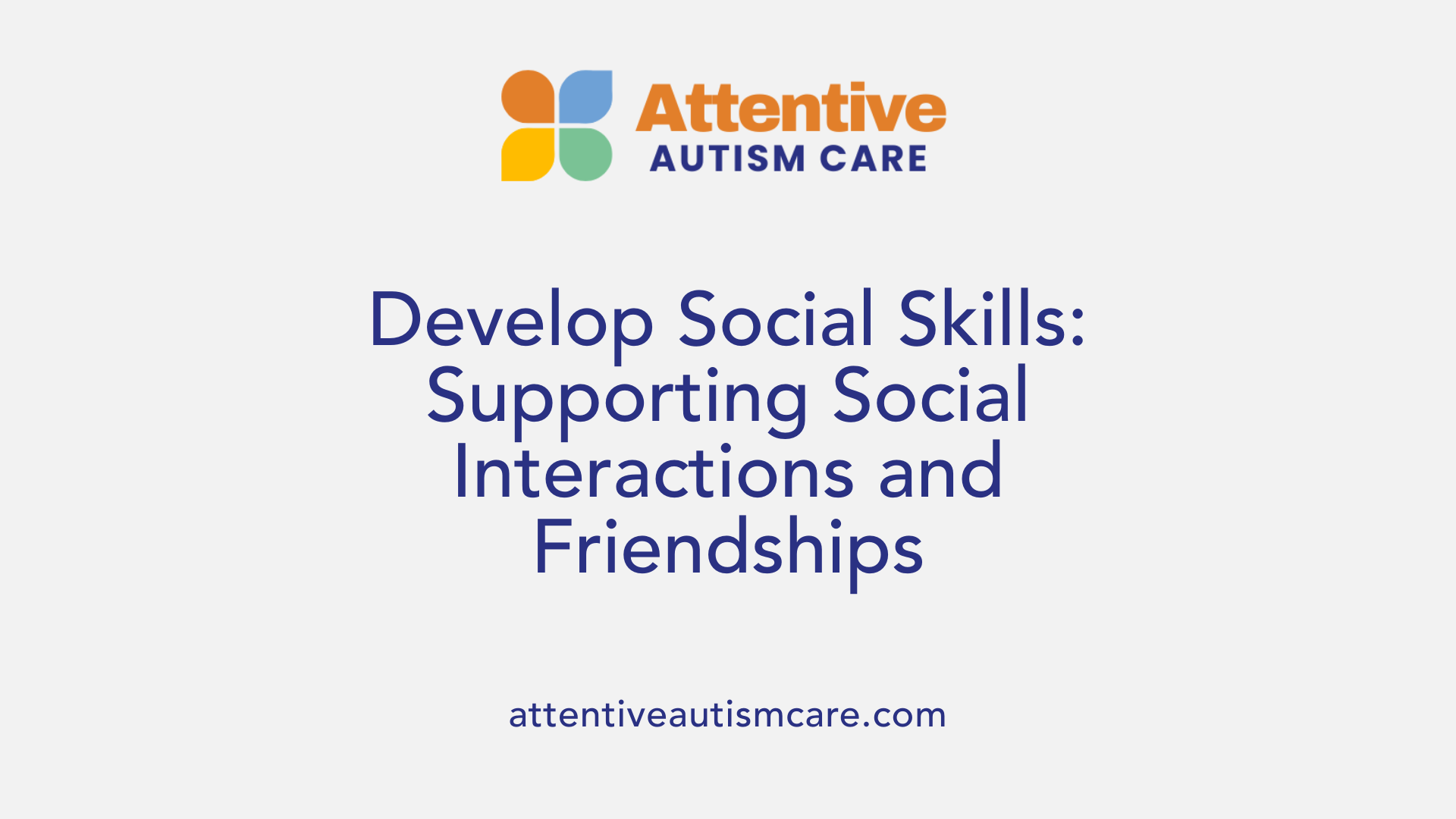
How can understanding social skills help in supporting autistic children’s social interactions?
Understanding social skills plays a vital role in helping autistic children build meaningful social interactions. When caregivers, teachers, and peers recognize specific social cues, such as facial expressions, body language, and conversational norms, they can better support children in developing these skills.
Teaching strategies like social stories, visual supports, and role-playing exercises can effectively instruct children on appropriate social behaviors. For example, practicing greetings, asking questions, and recognizing social signals can boost their confidence and reduce social anxiety.
Improving communication and encouraging perspective-taking help children understand others' feelings and reactions. Structured activities, including peer buddy systems and social skills groups, provide repeated practice in safe environments.
These efforts not only enhance children's ability to initiate interactions but also sustain friendships over time. As social skills improve, children generally experience higher self-esteem and emotional well-being, making social settings less stressful and more accessible.
By supporting social skills development through consistent, targeted interventions, we foster inclusive environments where autistic children can thrive socially. This approach helps reduce misunderstandings, builds empathy among peers, and ultimately encourages more natural and lasting friendships.
Structured Programs and Guided Practice
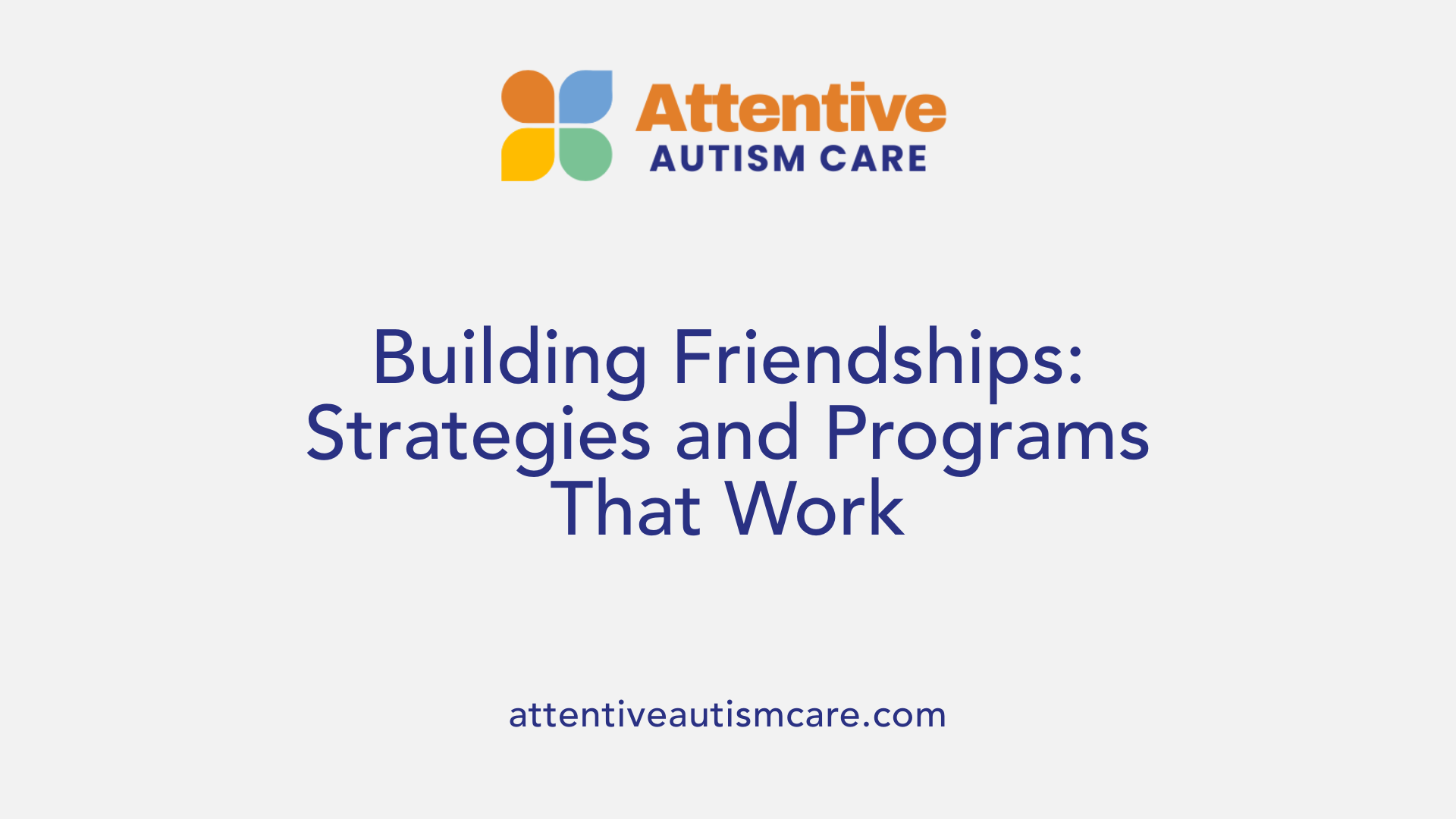
What are effective strategies for helping autistic children develop friendships?
Helping children with autism build lasting friendships involves a combination of structured programs, guided practice, and supportive environments. One effective approach is social skills coaching, which provides explicit teaching on how to navigate social interactions. This includes practicing greetings, asking questions, recognizing social signals, and understanding emotions through facial expressions.
In addition to direct teaching, unstructured support during times like recess can make a significant difference. During these free play periods, children can apply their skills in real-world settings with supervision and encouragement. Peer buddy systems also play a vital role. These programs pair autistic children with supportive, typically developing peers who help initiate and maintain social interactions in a guided, safe manner.
Role-playing activities are particularly useful for teaching various social scenarios. For example, children can practice entering a group, sharing toys, or asking for help through role-playing games. Visual supports like cue cards showing facial expressions or social scripts can reinforce understanding and confidence.
Creating opportunities for interaction in settings such as social skills groups, clubs, or community events allows children to practice in a less stressful environment. Effective strategies involve collaboration among parents, teachers, and professionals. Educating peers about autism fosters inclusion and acceptance, making social settings more accessible.
Including social goals in Individualized Education Programs (IEPs) and working with behavior analysts or BCBA professionals can provide tailored support. Consistency and patience over years are essential; initial social challenges do not mean future success isn't possible.
Employing these evidence-based methods promotes positive social experiences, helping children with autism form meaningful friendships that enrich their social, emotional, and overall development.
Implementing Evidence-Based Interventions
What are evidence-based approaches to facilitate friendship-building among autistic children?
Developing friendships for children with autism can be supported through several proven strategies. Central to these are social skills training, peer-mediated interventions, and the use of social narratives.
Social skills training focuses on teaching children how to interpret social cues, initiate conversations, and understand emotional responses. Peer-mediated interventions involve typically developing peers actively engaging with children with autism, creating natural opportunities for interaction and shared activities.
Social narratives are personalized stories that help autistic children understand social situations and appropriate responses, reducing anxiety and promoting positive social behavior.
Structured activities, such as organized playdates and community programs like Best Buddies, provide safe environments where children can practice skills in real-life settings.
Programs that encourage inclusive friendships—collaborations between autistic and typical peers—have shown to foster more stable and meaningful relationships. These friendships often involve higher levels of responsiveness and shared positive affect.
Practice plays a critical role. Activities like practicing greetings, questions, and recognizing social signals in controlled settings prepare children for spontaneous interactions.
Furthermore, a supports-based approach, which emphasizes flexible communication methods and shared interests, helps children engage equally and comfortably with peers.
By combining structured skill development with ongoing social exposure, these evidence-based methods effectively promote friendship-building, ultimately enriching social experiences and emotional well-being for autistic children.
| Intervention Type | Description | Additional Notes |
|---|---|---|
| Social Skills Training | Teaching social cues, conversation, and emotional understanding | Often occurs in small groups or one-on-one sessions |
| Peer-Mediated Interventions | Typical peers assist in guiding social interactions | Enhances natural learning and peer acceptance |
| Social Narratives | Storytelling to explain social situations | Customizable to individual needs |
| Community and Group Activities | Programs like Best Buddies, Lego clubs | Encourage ongoing engagement and relationship building |
Practical implementation supports long-term friendships, helping children with autism develop social competence that extends beyond the classroom.
Building Friendship Skills Through Practice and Play
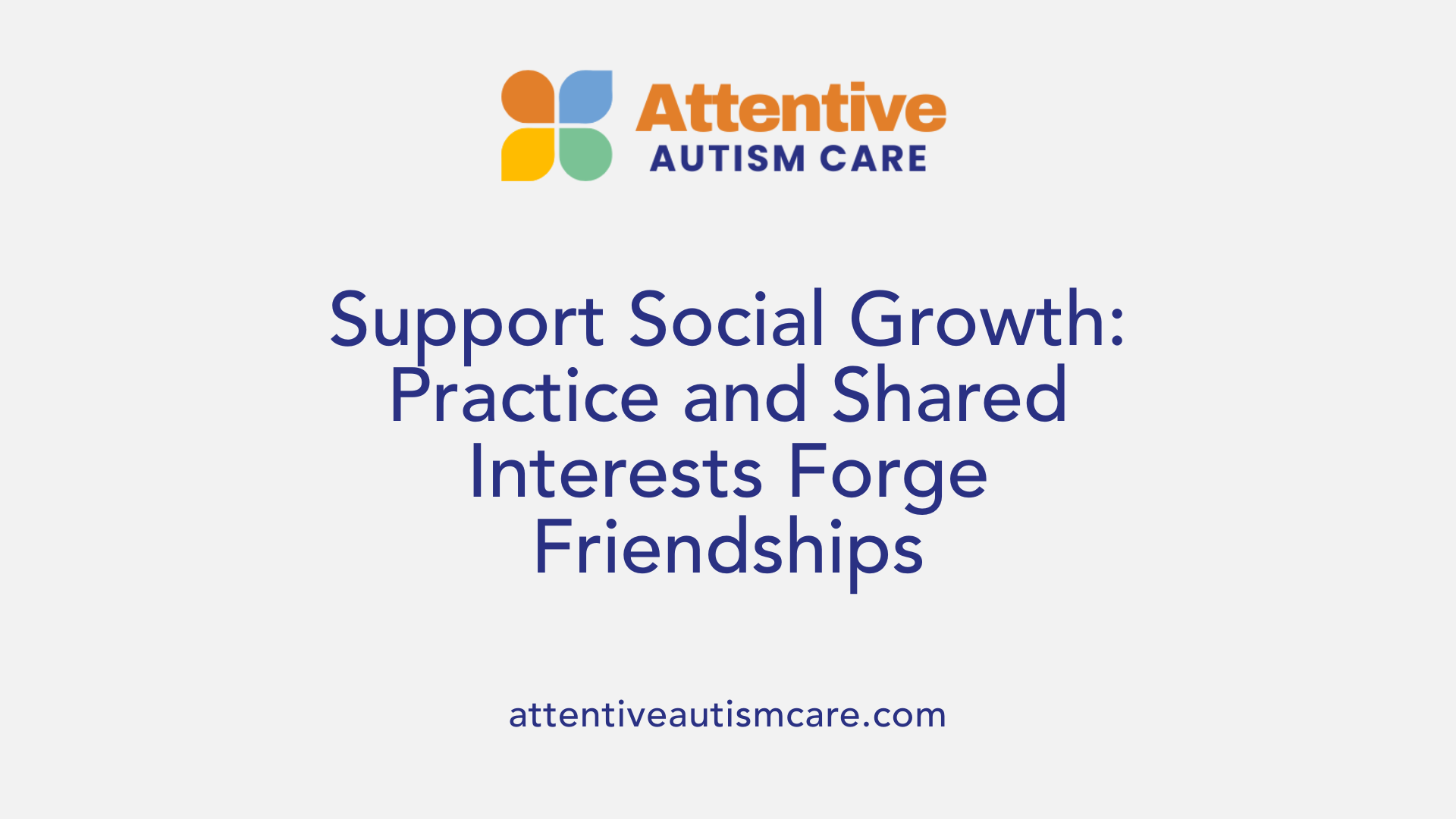
How can parents and caregivers support the social development of autistic children?
Supporting social development involves providing deliberate opportunities for children to practice social skills in a safe and encouraging environment. Parents and caregivers can facilitate this through structured activities like social skills groups, peer-mediated play, and using social stories that depict common social situations.
Using visual aids such as cue cards, facial expression charts, and social narratives helps children learn to recognize emotions, understand social cues, and develop appropriate responses. These tools make abstract concepts more concrete, enhancing comprehension and retention.
Reinforcing appropriate behaviors with specific praise and modeling good social interactions boost confidence and motivate children to try new skills. Incorporating children’s particular interests—like music, superheroes, or humor—can serve as natural motivators, encouraging engagement with peers.
Pairing children with understanding and tolerant peers supports natural learning and friendship development. Schools and community programs can further enrich these efforts through inclusive activities, social clubs, and structured support systems.
Overall, a comprehensive approach—combining visual supports, positive reinforcement, naturalistic practice, and involvement of supportive adults—can significantly help autistic children develop meaningful social connections.
What are some practical activities used to develop social skills?
Practical activities include role-playing games, which allow children to rehearse greetings, questions, and social signals in a controlled setting. For example, practicing how to say 'hello' and ask others about their interests helps prepare children to initiate conversations.
Teaching children to recognize and interpret social signals, such as body language and facial expressions, is essential. This can be done through games like charades or matching exercises.
Using shared interests, such as hobbies or favorite activities, provides a natural basis for conversation and friendship building. Organizing group activities centered around these interests encourages children to interact while enjoying what they love.
Additionally, introducing children to the concept of 'theory of mind'—understanding that others have thoughts and feelings different from their own—can improve empathy and social understanding.
By practicing these activities regularly and gradually increasing complexity, children learn to navigate various social situations with greater ease and confidence.
| Activity | Purpose | Tips |
|---|---|---|
| Role-playing | Practice social interactions | Use scripts, start simple, and offer positive feedback |
| Recognizing social cues | Understand non-verbal signals | Use visual aids and games like charades |
| Shared-interest groups | Foster natural conversations | Pick common hobbies, facilitate group activities |
| Social stories | Explain social rules | Use pictures and storytelling |
How does practicing social situations and using shared interests promote friendship?
Practicing social situations in a consistent and supportive environment helps autistic children become more comfortable and proficient in their interactions. Repeated practice reduces anxiety and builds a repertoire of responses to social cues.
Shared interests serve as a foundation for friendships because they provide common ground for interactions. When children bond over hobbies, sports, or favorite topics, they find it easier to initiate conversations and sustain exchanges.
By combining practice with shared activities, children experience success, which boosts their confidence. This positive reinforcement encourages ongoing social engagement.
Supportive adults, peers, and structured activities create a space where autistic children can develop these skills gradually. Over time, these efforts lead to stronger, more natural friendships that contribute to their social well-being.
Enhancing Social Confidence and Resilience
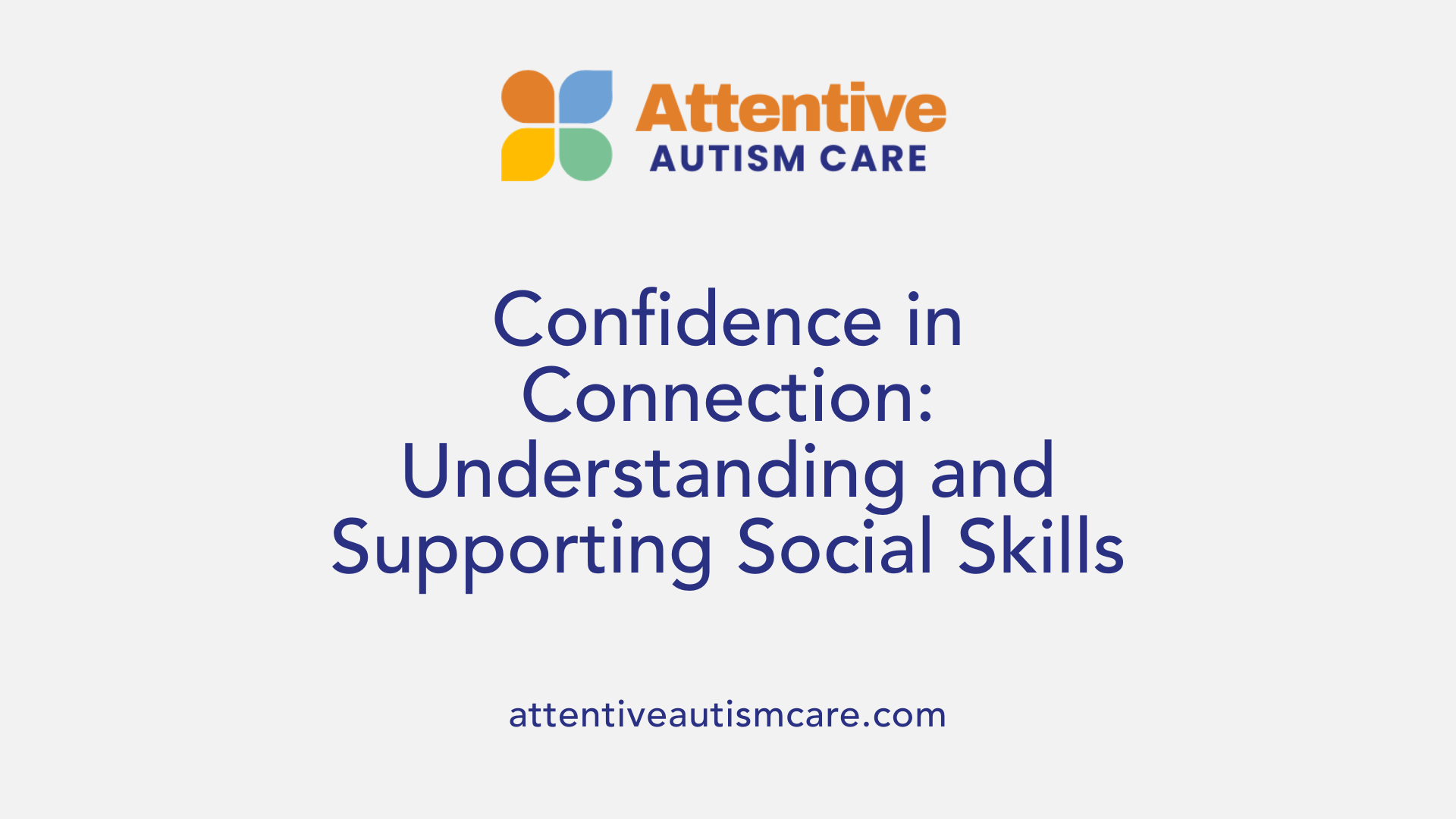
How can understanding social skills help in supporting autistic children's social interactions?
Understanding social skills is crucial for supporting children with autism in their social journey. When caregivers, teachers, and peers grasp the basics of social interactions—such as initiating conversations, recognizing social cues, and managing conflicts—they can better create environments that foster meaningful connections.
By explicitly teaching social rules and cues using visual supports, role-playing, and structured activities, children learn to navigate social settings more effectively. For example, practicing greeting others, asking questions about their interests, or recognizing when someone is upset helps build confidence.
Supporting social skill development also involves understanding the child's unique communication style and behavioral responses. This awareness allows for tailored strategies that reduce social stressors and promote positive interactions.
Interventions like social stories, peer buddy systems, and social skills groups provide consistent opportunities for children to practice and reinforce these skills. Over time, children become more independent in managing social situations, which boosts their confidence and ability to form friendships.
Building social competence not only helps autistic children connect with peers but also enhances their emotional resilience, enabling them to cope better with challenges and setbacks in social environments.
Creating Lasting Friendships and Embracing Diversity
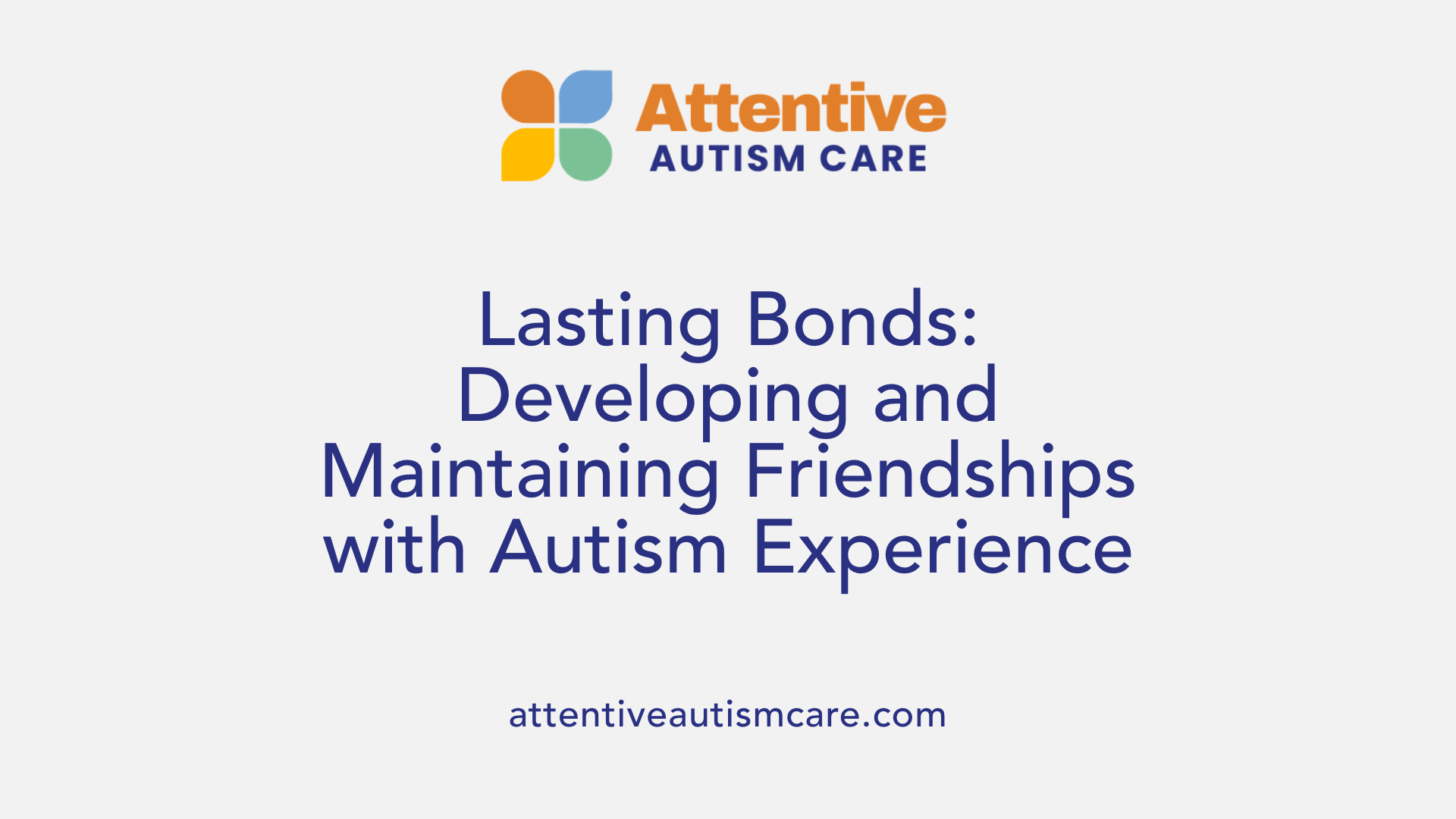
How can children with autism develop and maintain long-term friendships?
Building lasting friendships requires patience, ongoing support, and intentional efforts. It’s important for children with autism to receive continuous guidance in social skills, such as initiating contact, understanding emotions, and navigating social cues. Structured programs like buddy systems, social skills groups, and community activities provide safe spaces for practicing interactions over time.
In addition to skill-building, fostering an environment of acceptance helps friendships flourish. Encouraging inclusive attitudes by normalizing differences and teaching peers about neurodiversity creates a welcoming atmosphere. This support not only benefits children with autism but also promotes empathy and understanding among all learners.
Consistent involvement from parents, teachers, and community programs builds a foundation of trust and familiarity. Activities such as playdates, clubs, and recreational programs—like Special Olympics or Lego clubs—offer opportunities to develop social bonds in natural settings. Importantly, developing friendships is a gradual process; initial difficulties do not preclude future success. With patience and sustained effort, children with autism can form meaningful, lasting connections.
Fostering Friendship Through Collaborative Support
Supporting autistic children in developing friendships is a multifaceted process that benefits greatly from inclusive environments, targeted interventions, and ongoing patience. With structured support, education, and collaboration among parents, teachers, peers, and community programs, children on the autism spectrum can build meaningful relationships that enrich their lives and promote emotional resilience. Emphasizing acceptance, understanding, and shared interests lays the foundation for lasting, rewarding friendships that support their social and emotional development.
References
- Autism and friendships
- Making friends - supporting your autistic child
- Helping children who are neurodiverse build friendships
- Five Steps to Help Your Child with Autism Make Friends
- Friendship interventions and measurements in children ...
- Making Friends: Answers for Teens With Autism
- How to Help Your Child Make Friends With a Child Who ...
- Friends and peers: autistic children and teenagers
- Friendship in High-functioning Children with Autism ...
- Friendship interventions and measurements in children ...


